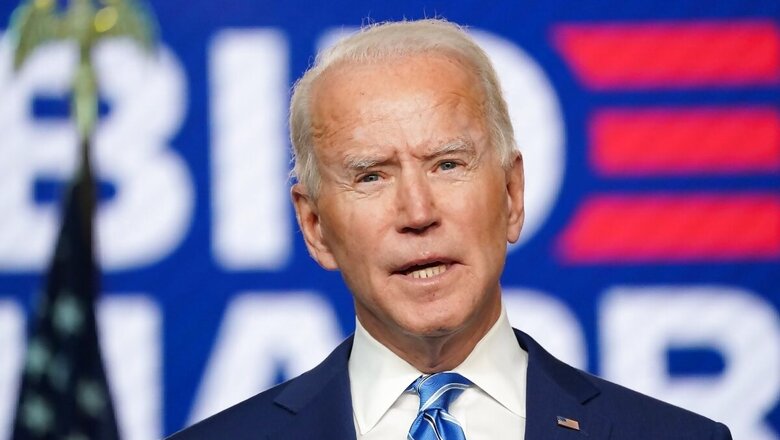
views
On 4 November, as the world anxiously awaited confirmation of the outcome of the US election — the world’s second largest emitter officially withdrew from the Paris climate agreement. This makes the US the only country to renege on the Paris Pact, the historic commitment to limit global temperature rise well below 2 degrees Celsius above pre-industrial levels.
“An expensive hoax” versus “existential threat to humanity”
President Trump, who spearheaded the US’ exit from the diplomatic effort, has often termed climate change a “hoax.” The Rhodium Group, an independent research provider, has estimated that as a result of the environmental rollbacks instituted during Trump’s tenure, US emissions will increase by 1.8 gigatons by 2035, an amount equal to almost one-third of all US emissions in 2019. Total US emissions will be 3 percent higher in 2035 than they would have been under the Obama regulations.
To rescue the economy from the rampage caused by the Covid crisis, the US government launched a US$ 2.3 trillion stimulus package in March 2020. Despite a strong push for green stimulus by climate advocates, only 1.1% of the total can be classified as green. Worryingly, the stimulus provided almost US$ 479 billion unrestricted support to sectors proven to be environmentally harmful in the past amidst several rollbacks on environmental regulation. More recently, Trump reiterated his rationale for exiting the Paris Climate Accord in the Final Presidential Debate. He claimed that the agreement was unfair to the US since it forced them to finance mitigation activities in developing countries. It wouldn’t be an exaggeration to say that a Trump victory would spell doom for climate change efforts around the world.
Total US emissions will be 3 percent higher in 2035 than they would have been under the Obama regulations.
In stark contrast, Joe Biden has declared climate change as the “number one issue facing humanity” and vowed a national transition from fossil fuels to renewable energy. He has pledged to invest $2 trillion in his first term on clean energy, on top of any additional COVID relief spending. This would include spending on retooling industrial facilities to make clean products, investments in clean electricity and transit, incentives for EV deployment, and building efficiency. He has also promised to embrace the Green New Deal, an economic and political framework to address climate change, decarbonise the economic infrastructure, create new business opportunities, and employ millions of disadvantaged workers in an emerging green economy. It would be naïve to expect that the proposal would get implemented in its precise form. However, it does provide a refreshingly useful blueprint for steering action in the right direction.
Even with a Biden Presidency, the climate battle would only be half-won
Joe Biden has pledged that he will rejoin the Paris agreement on his very first day in office. This step would provide a much-needed fillip to global efforts for alleviating the climate crisis. It could also catalyse financial support to finance the low-carbon transition in countries such as India. However, with the US accounting for 14% of global emissions, a lot more is expected from the world’s largest economy in order to move the needle on climate change.
While things would definitely improve on the international front, effecting change at the domestic level would come with its own share of challenges.
Under President Obama, the US had pledged to cut emissions by 26-28 per cent below its 2005 level by 2025. However, in order to drive international leadership on climate change, US under Biden must raise ambition and submit bolder INDCs. If the US were to formally announce a net-zero emissions target by 2050 (as promised by Biden), it would join the ranks of the EU, Japan, China, the Republic of Korea and several other countries. This would be an important signal to the rest of the world and significantly accelerate momentum on global climate change efforts.
While things would definitely improve on the international front, effecting change at the domestic level would come with its own share of challenges. Without a working Senate majority, Biden’s efforts to realise a green vision for the US might be blocked. As reported by Bloomberg, the US Senate is increasingly likely to remain in Republican control, a development that doesn’t augur well for the former Vice President’s ambitious climate plan.
Without a working Senate majority, Biden’s efforts to realise a green vision for the US might be blocked.
To translate his plan into action, Biden will have to exercise his executive powers as President and depend heavily on federal agencies. The power of sub-national climate action will also become increasingly important. As seen during President Obama’s tenure, the Biden administration will have to rely on regional and city-led leadership on climate action in the absence of backing from the Senate. As banks and asset managers begin to take the risks of fossil-fuel investment more seriously, support from the financial community will also become critical.
While electoral pledges and plans cannot replace actual on-the-ground action, they do usually precede it. As Biden inches closer to a victory, Americans and the rest of the world have something positive to look forward to.
Disclaimer: The author is Junior Fellow with ORF’s Economy and Growth Programme. Her research focus is on human capital development — with an emphasis in education. The article first appeared in ORF.
Read all the Latest News, Breaking News and Coronavirus News here
















Comments
0 comment